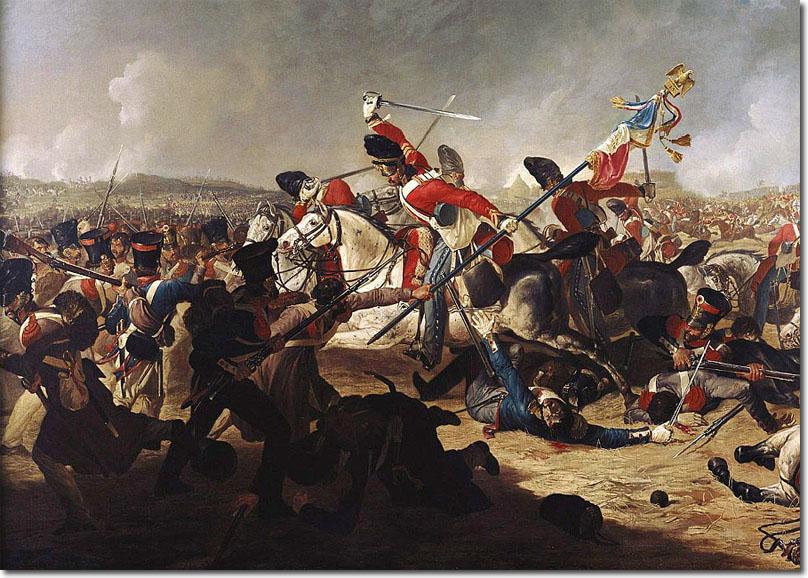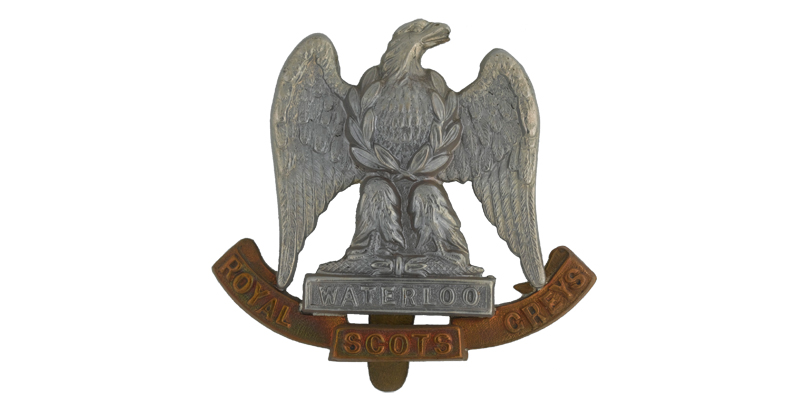The 2nd Dragoons were so-called because of the colour of their horses. Or as Napoleon remarked 'those men with their terrible grey horses' at Waterloo. This is where Sergeant Ewart claimed an Imperial French Eagle and rode into immortality as the eagle became part of the cap badge of the regiment.
My great grandfather had four brothers. he and three of them joined the King's Own Scottish Borderers. The other joined the Greys and perhaps this family connection is why I feel such pride and affection towards the premiere Scottish Cavalry regiment. Being second in the line, the regiment long ago adopted the motto: Second To None
Anyhow, I have just bought a large canvas print of Lady Butler's Scotland Forever, depicting the charge at Waterloo. I intend to have this framed and hung in my home as my own tribute to the family connection to this regiment.
The painting can be seen on this wiki page.

 en.wikipedia.org
Some battle history
en.wikipedia.org
Some battle history


 www.nam.ac.uk
Others old enough may remember in the early seventies when they became the Royal Scots Dargoon Guards and hit the top of the charts with Amazing Grace.
www.nam.ac.uk
Others old enough may remember in the early seventies when they became the Royal Scots Dargoon Guards and hit the top of the charts with Amazing Grace.
P.S. It is said that the charge in the painting is inaccurate in a number of ways but why let history stand in the way of glory, I say
My great grandfather had four brothers. he and three of them joined the King's Own Scottish Borderers. The other joined the Greys and perhaps this family connection is why I feel such pride and affection towards the premiere Scottish Cavalry regiment. Being second in the line, the regiment long ago adopted the motto: Second To None
Anyhow, I have just bought a large canvas print of Lady Butler's Scotland Forever, depicting the charge at Waterloo. I intend to have this framed and hung in my home as my own tribute to the family connection to this regiment.
The painting can be seen on this wiki page.

Royal Scots Greys - Wikipedia


The Royal Scots Greys (2nd Dragoons) | National Army Museum
Formed in 1681, this cavalry unit was Scotland's senior regiment. Its long and distinguished service with the British Army continued until 1971, when it was merged into The Royal Scots Dragoon Guards.
P.S. It is said that the charge in the painting is inaccurate in a number of ways but why let history stand in the way of glory, I say

